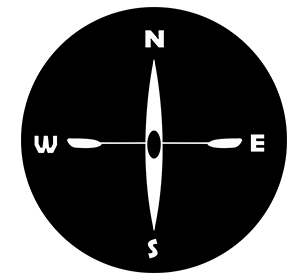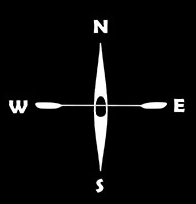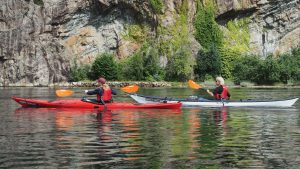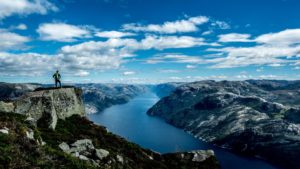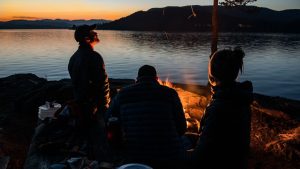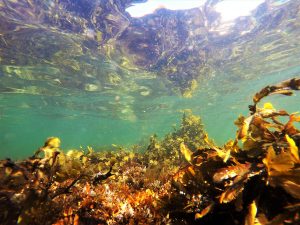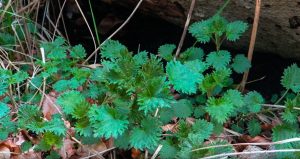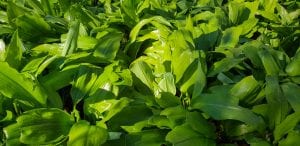Foraging seaweed is something humans have done for several thousand years. Seaweed is also often called “sea vegetables”. In Norway, the first people to settle settled at the coast where their primary food source was the sea. Easy to get and very nutritious, seaweed was a natural source for food, and approximately 40% of people’s daily food intake consisted of seaweed.
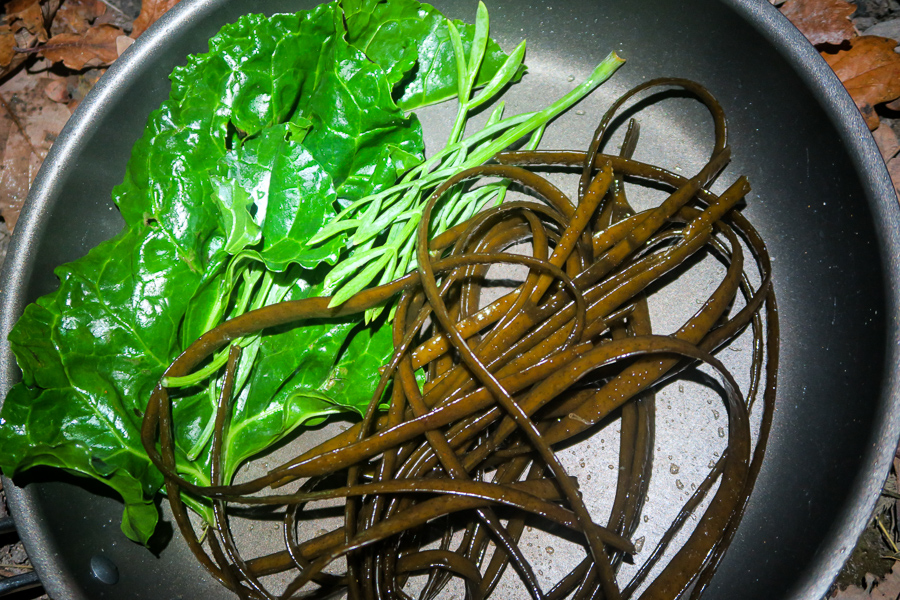
Today seaweed is being used in everything from food for agriculture to cosmetics, pharmacy products and of course, an ingredient in sushi. Seaweed is also being considered a SuperFood, because of it’s high nutrition values. It contains reasonable amounts of vitamins A, B-12, C, E and K. 30 grams of Kelp seaweed, for instance, contains 25% of a person’s daily vitamin K needs.
There are no poisonous seaweeds in Scandinavia, but you should still consider when foraging seaweed, where to harvest.
- Only harvest from clean water (non-polluted), avoiding areas close to sewage, harbours or places where water isn’t moving too much.
- In Norway, you’re allowed to harvest what you will use for yourself, but not for selling commercially (See Friluftsloven §5).
- It is also essential when harvesting, to take care of the plant, meaning you shouldn’t harvest an entire plant, but only take up to 1/3 of each plant. Also, to keep the plant intact, cutting instead of pulling up the roots is essential.
- Always harvest fresh seaweed, don’t pick up seaweed that is floating around – you never know if it’s been floating there for one hour or one week.
I’ve picked three of my favourite seaweeds, that are tasty and easily accessible all over Scandinavia. These are usually easy to get right from the kayak and doesn’t require any equipment besides a knife. You can also harvest these directly from the shore but be careful not to slip on wet seaweeds.
Bladder-wrack (Blæretang)
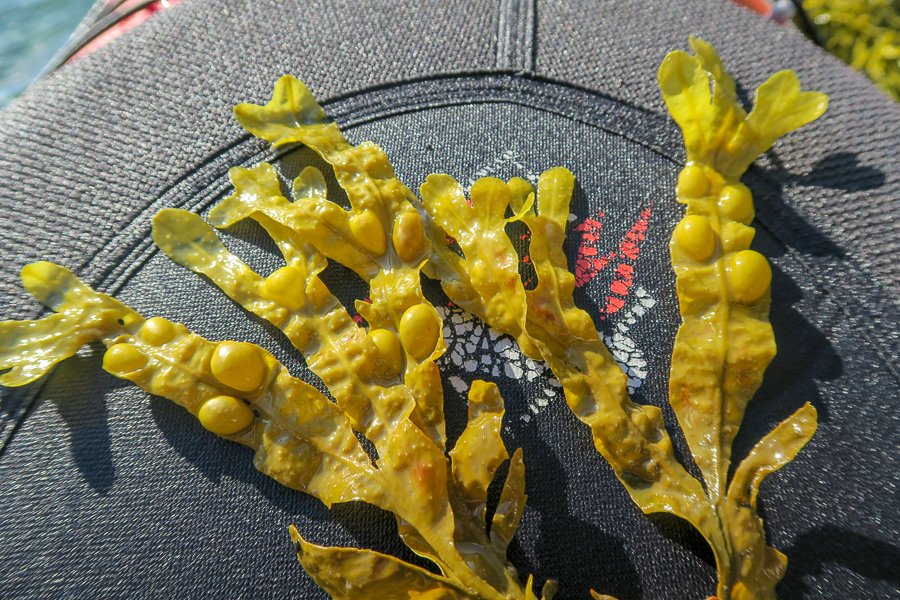
This seaweed is one of the most common seaweeds along the Scandinavian coasts.
- The bladders usually grow in pairs.
- At every new leave, there’s a bladder in the middle.
- The colour is brown/olive-green.
- They grow up to 90 cm long and about 2 cm wide.
- Bladders contain air.
The bladders are functioning as floatation for the plant, making the leaves get closer to the surface where they get more sunlight. Their growing season is from September to March. If harvesting them outside the season, don’t pick too many from the same plant. Bladder-Wrack contains a lot of protein and vitamin A and C.
How to cook this seaweed:
When cooking, as with many other seaweeds the plant changes colour from the brown/olive-green colour to a brighter green colour. I like to use the top 5-10 cm of the plant in two different ways. It can be cooked with other vegetables in a stew and soups, especially good in bacalao and other fish dishes.
Another way is to take the 2-5 cm of the top and fry them crisp in oil on a pan. Once fried, they taste just like potato chips. This is usually quite popular when I’m doing courses and longer guided trips, as people tend to be quite a sceptic until the seaweed turns colour when fried.
Egg-Wrack (Grisetang)
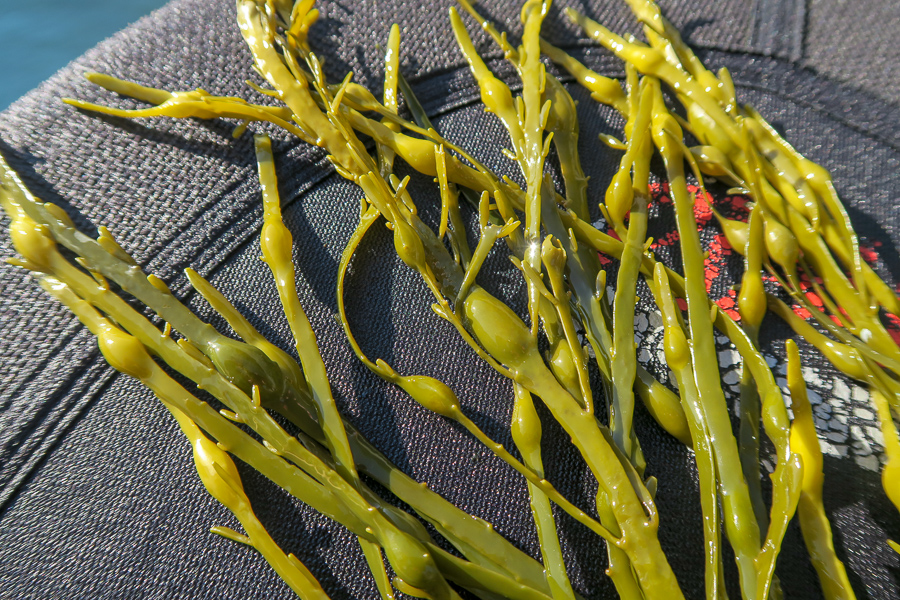
Another very common seaweed in Scandinavia, the egg-wrack can sometimes be confused with bladder-wrack or channel-wrack.
- Bladders grow on a long string, shaped like an egg.
- Brown/olive-green coloured.
- They are quite tough and chewy.
- The plant grows up to 1,5m long. The bladder varies in size. The stem is usually about 1-2 cm wide.
- Bladders contain water.
As with bladder-wrack, the bladders make the seaweed float to the surface to get more sunlight. The growing season is from June to November. They are quite nutritious and contains a fair amount of omega 3 and 6, as well as vitamin C and amino acids. They also contain a fair amount of magnesium and zinc. Because of its nutritious values, egg-wrack has been and are still being used in food for farm animals. In Norway, it’s been used by most of the farms (before the 1960s) along the fjords in the winter, since it was difficult to produce enough hay for the winter. Some places are still feeding seaweed to sheep and goats to add flavour to the meat.
How to cook this seaweed:
Drying egg-wrack and grinding it for use in dishes is the best choice. The egg-wrack is somewhat chewy even when cooked or fried.
Oarweed (Sukkertare)
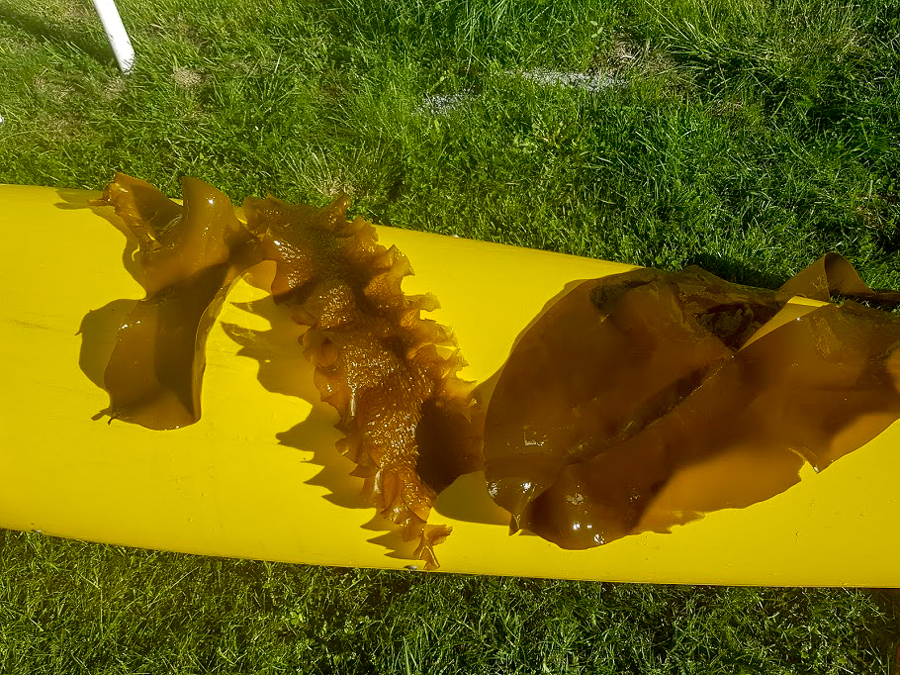
Oarweed is mostly found on rocky shores at the coast but can be found in the fjords as well, though they tend to grow a bit deep, so you need to go on a low-tide to get these.
- Brown coloured. Shiny and a bit slippery.
- About 2-3mm thick. 60cm wide and up to 3m long.
- Shaped like fingers, they’re called ‘Finger-tang’ in Danish (finger-weed).
Oarweed contains a lot of different vitamin B (1, 2, 3 and 12), calcium, magnesium and iodine. When harvesting, take the parts closest to the stem, the ends are the oldest parts.
How to cook this seaweed:
You can use them as a substitute or supplement to pasta/noodles.
Of the three listed seaweeds, this one is by far the best for frying into crisps. Gently rinse it in freshwater to get rid of sand and small animals (it also dims the salty taste). Cut them into small strips of 1cm wide, 2-3cm long and fry with some olive oil. These make a perfect snack on any trip.
Recommended books on seaweed:
Dietz, A., & Andersen, L. K. (2017). Tang – Et hav af mad. København: Lindhardt og Ringhof.
Lambert, R. (2016). Seaweed Foraging in Cornwall and the Isles of Scilly. Penzance: Alison Hodge.
